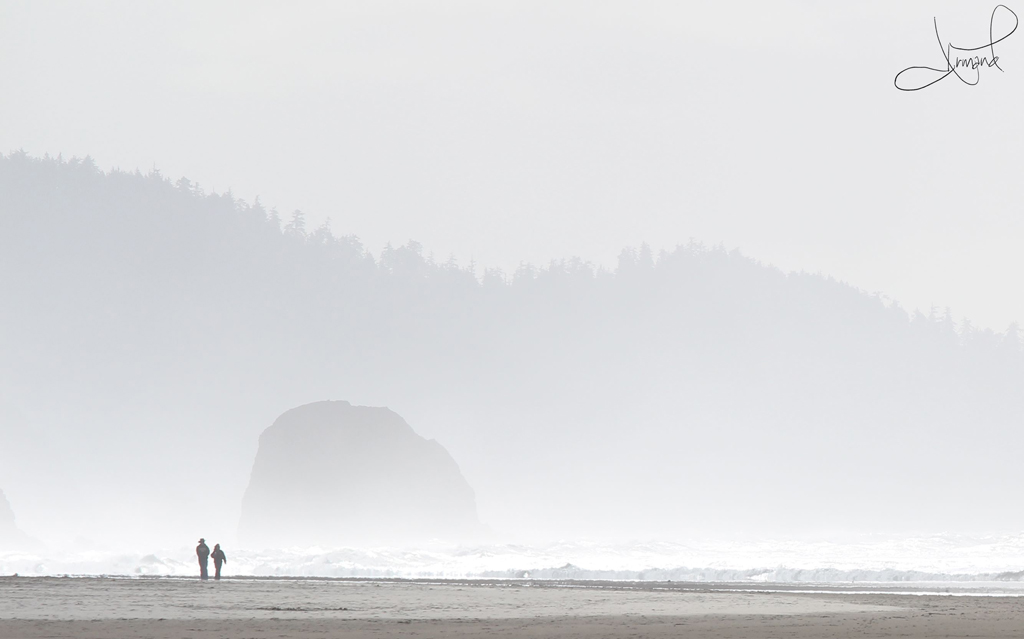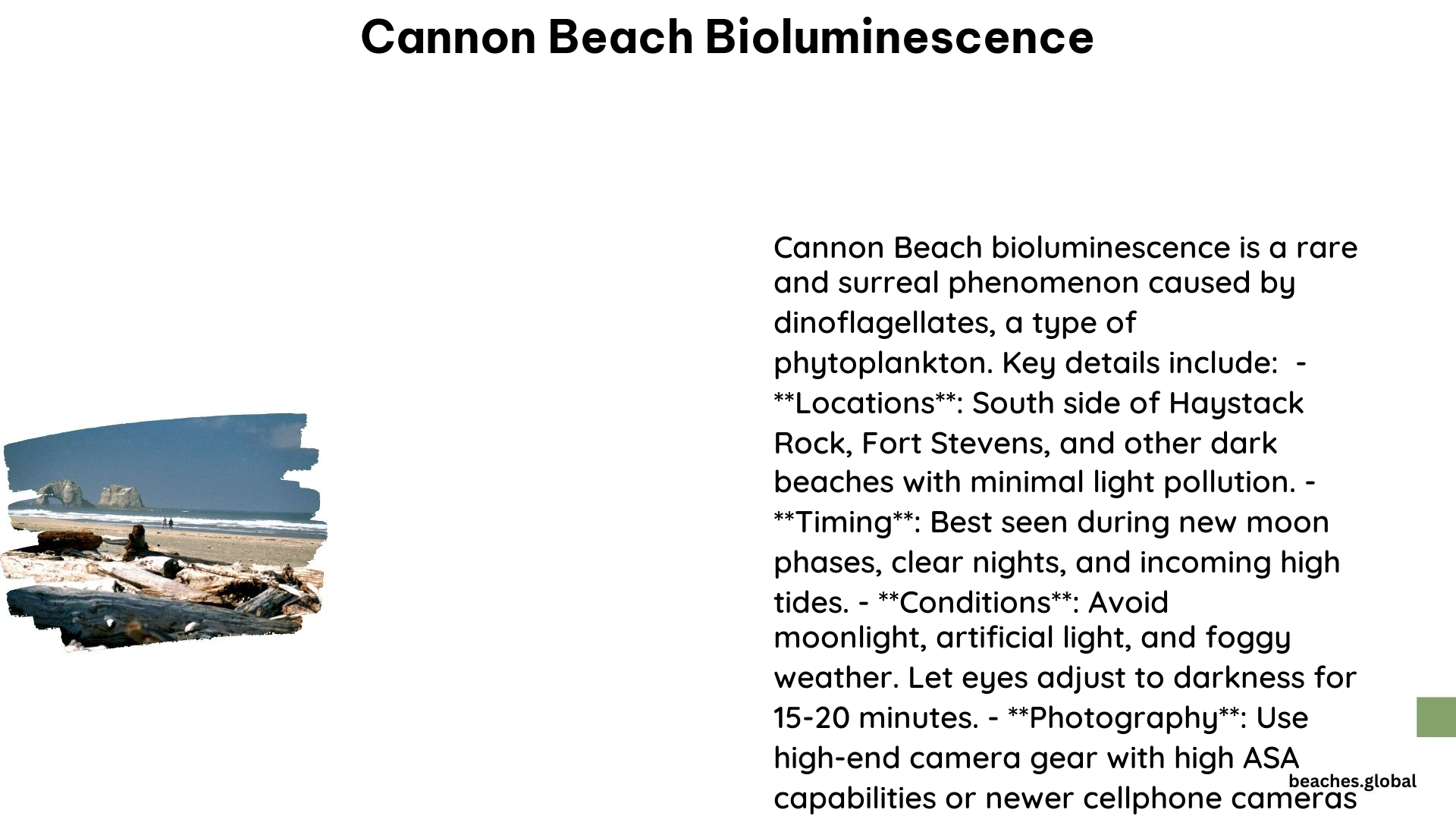Cannon Beach, Oregon, is renowned for its stunning natural beauty, and one of the most captivating phenomena that draw visitors to this coastal gem is the bioluminescence. This mesmerizing display of glowing waves and sparkling sand is a result of the presence of microscopic marine plankton called dinoflagellates, which emit light when disturbed.
What is Cannon Beach Bioluminescence?

Bioluminescence is the production and emission of light by living organisms, and in the case of Cannon Beach, it is caused by the presence of dinoflagellates. These microscopic marine plankton are capable of producing a chemical reaction that results in the release of energy in the form of light. When the waves crash against the shore or when you walk on the wet sand, the movement and agitation of the water trigger the dinoflagellates to emit this ethereal glow.
When and Where to See Cannon Beach Bioluminescence

The best time to witness the bioluminescence at Cannon Beach is during the summer months, typically from June to September. However, the exact duration of the phenomenon can vary from year to year, so it’s essential to check local reports and forecasts before planning your visit.
The most optimal conditions for observing the bioluminescence are:
-
New Moon Phase: The new moon phase, when the moon is not visible in the sky, is the ideal time to see the bioluminescence, as the lack of moonlight allows the glowing waves and sand to be more prominent.
-
Dark Beaches: Beaches with minimal artificial light pollution, such as the south side of Haystack Rock and Fort Stevens State Park, are the best locations to witness the bioluminescence. Avoid beaches with heavy lighting, as it can diminish the visibility of the glowing effects.
-
Agitated Surf: The bioluminescence is most pronounced when the waves are crashing and the water is agitated, as this triggers the dinoflagellates to emit their light.
Tips for Experiencing Cannon Beach Bioluminescence
To make the most of your bioluminescence experience at Cannon Beach, consider the following tips:
-
Adjust to the Darkness: Before venturing out to observe the bioluminescence, allow your eyes to adjust to the darkness for at least 15 minutes. This will help you better appreciate the subtle glow of the waves and sand.
-
Avoid Artificial Light: Refrain from using any artificial light sources, such as flashlights or cell phones, as they can disrupt the natural bioluminescence and diminish the overall experience.
-
Walk on the Wet Sand: One of the most captivating aspects of the bioluminescence is the sparkling footprints left behind as you walk on the wet sand. Be sure to take a leisurely stroll along the shoreline to fully immerse yourself in the experience.
-
Photography Tips: Capturing the bioluminescence on camera can be challenging, but with the right equipment and techniques, you can create stunning images. Use a high-end camera with high ISO capabilities or a newer smartphone camera, and experiment with long exposure settings to capture the glowing waves and sand.
-
Consider Guided Tours: If you’re interested in learning more about the science behind the bioluminescence or want to improve your photography skills, consider joining a guided tour or workshop led by local experts.
Conclusion
Cannon Beach’s bioluminescence is a truly mesmerizing natural phenomenon that should not be missed by any beach enthusiast. By understanding the science behind it, knowing the best times and locations to observe it, and following the tips outlined in this guide, you can ensure a truly unforgettable experience at this stunning Oregon coastal destination.
References
- Milky Way over Haystack Rock, Cannon Beach, OR, USA – Reddit 2020
- Oregon Coast | Bioluminescent and Night Sky Photography Workshop
- Bioluminescent Waves Caught In Surreal Photos – That Oregon Life
- Bioluminescent Phytoplankton: What Makes Glowing Sand On Oregon Coast, Washington
- How to Chase Bioluminescence, Oregon Coast Edition – Solution 7 Media
